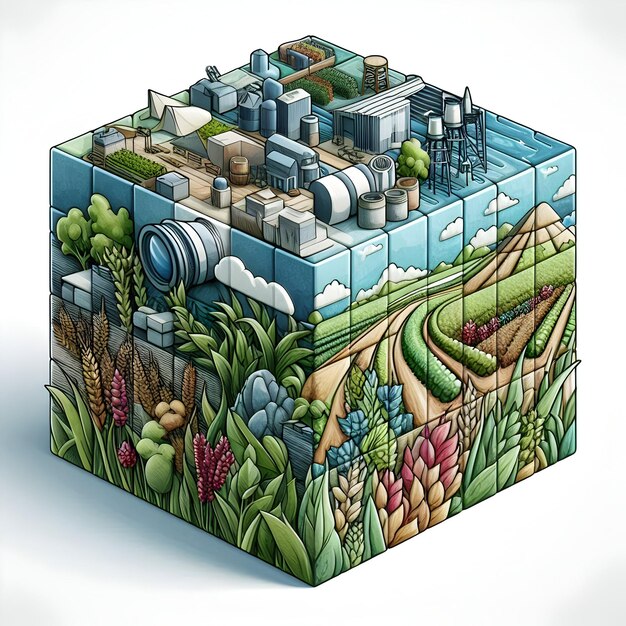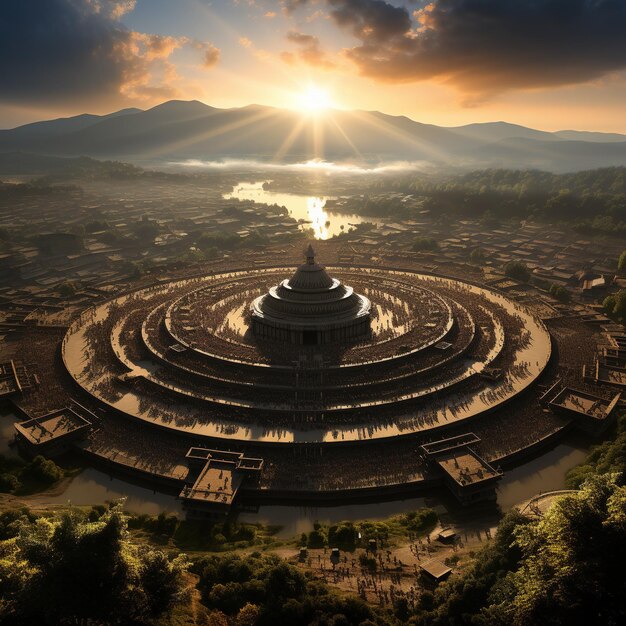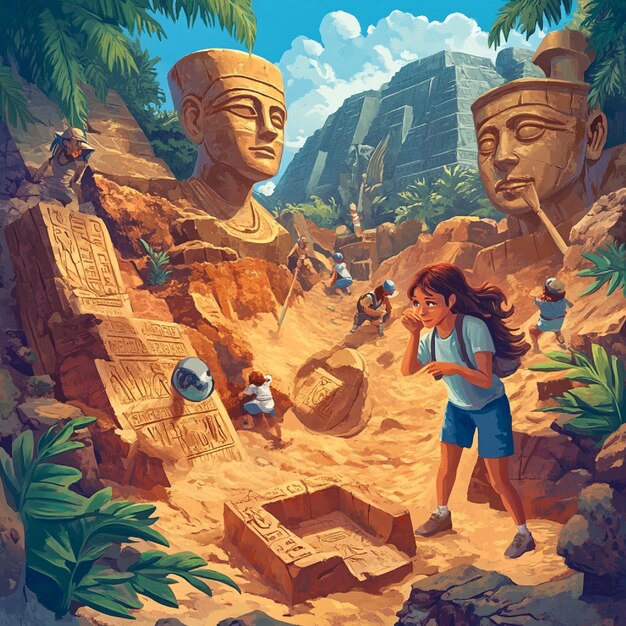15 Mind-blowing Facts About Machu Picchu That Will Leave You In Awe
Machu Picchu, the “Lost City of the Incas,” is a world-renowned archaeological site situated on a mountain ridge above the Sacred Valley in Peru. This 15th-century Incan citadel has long been a source of fascination for historians, archaeologists, and travelers alike due to its breathtaking beauty and intriguing history. Here are 15 mind-blowing facts about Machu Picchu that will leave you in awe:
Fact 1:
Machu Picchu was built around 1450 but abandoned less than a hundred years later, during the Spanish conquest.
Fact 2:
Despite being located only about 80 kilometers (50 miles) northwest of Cusco, the Incan capital, Machu Picchu was not discovered by the outside world until 1911.
Fact 3:
The name Machu Picchu translates roughly to “Old Peak” in the Quechua language.
Fact 4:
Machu Picchu‘s construction is estimated to have required around 20,000 workers and 100,000 limestone blocks.
Fact 5:
The city’s urban design is based on precise astronomical alignments, such as the solstice alignment of its temples.
Fact 6:
The Intihuatana, or “Hitching Post of the Sun,” is a stone structure thought to be used for astronomical and agricultural purposes.
Fact 7:
The Inca Trail, a popular hiking route to Machu Picchu, covers about 43 kilometers (27 miles) and takes approximately 4 days to complete.
Fact 8:
Many of the buildings at Machu Picchu are terraced, with some rising as high as 20 meters (65 feet) above the surrounding land.
Fact 9:
The site features several aqueducts, which supplied water to the city’s residents and irrigation systems.
Fact 10:
The Temple of the Sun is believed to have been a religious and ceremonial center, with intricate carvings depicting various deities.
Fact 11:
The Royal Tomb, located in the Temple of the Moon, is thought to have been the burial site for a high-ranking Incan noble.
Fact 12:
The Terrace Fields of Machu Picchu cover about 62,000 square meters (667,000 square feet) and were used for agriculture.
Fact 13:
The site is located at an altitude of around 2,400 meters (7,874 feet) above sea level.
Fact 14:
Despite the challenges presented by its remote location and harsh climate, Machu Picchu has become a major tourist attraction, attracting over 1 million visitors annually.
Fact 15:
UNESCO designated Machu Picchu as a World Heritage Site in 1983, recognizing its outstanding universal value.

Discovering the Secrets of Machu Picchu: 15 Fascinating Facts
Machu Picchu, a
15th-century Incan city
nestled high in the
Andes Mountains
of Peru, continues to baffle and intrigue visitors from around the world. Dating back to the Inca Empire, between 1450 and 1572 AD, this ancient
citadel
remains shrouded in mystery and enigma. Situated approximately 80 kilometers northwest of Cusco, this UNESCO World Heritage Site sits at an elevation of 2,430 meters (7,970 feet). Despite extensive research and numerous theories, many aspects of Machu Picchu’s history, construction, and significance remain a captivating puzzle. Join us as we unravel 15 enticing facts about this architectural and cultural wonder.
Location:
Machu Picchu lies in the Cusco Region, Province of Urubamba, and District of Machupicchu. This remote location was strategically chosen due to its abundant water sources, fertile land, and defensive advantages.
The Incas:
Machu Picchu’s origins are linked to the Inca civilization, a people believed to have originated in the Peruvian highlands around 1200 AThe Incas were renowned for their architectural prowess, complex social organization, and advanced agricultural techniques.
Construction:
Machu Picchu’s impressive stone structures were expertly crafted using techniques such as dry-stone construction and the use of intricate interlocking stones. These methods allowed for the buildings to withstand earthquakes, which are common in this seismically active region.
Purpose:
The primary use of Machu Picchu remains a mystery, with theories ranging from being a royal retreat, sacred site, or even an astronomical observatory. Its remote location and lack of evidence for agricultural production suggest that it may have held a spiritual significance for the Incas.
5. Rediscovery:
Machu Picchu was rediscovered on July 24, 1911, by American historian Hiram Bingham. Although Bingham’s account of discovering the site single-handedly has been contested, his work brought international attention to Machu Picchu.
6. Terraced Fields:
The terraced agricultural fields found at Machu Picchu showcase the Incas’ ingenious engineering skills, as well as their ability to cultivate crops in challenging environments.
7. Incan Water System:
Machu Picchu’s advanced water distribution system enabled the inhabitants to access fresh water through a network of channels, aqueducts, and reservoirs.
8. Inti Watana:
This sun temple, known as Inti Watana or the “House of the Sun,” is believed to have been used for religious ceremonies. Its location and orientation suggest that it was designed to align with significant solar events.
9. Temples:
Machu Picchu contains several impressive temples, including the Temple of Three Windows and the Temple of the Sun. These structures showcase the Incas’ mastery of architectural design and construction techniques.
10. Temple of the Condor:
This enigmatic temple is believed to represent a condor, an important symbol in Inca mythology. Its design and orientation suggest that it may have been used for ritual or astronomical purposes.
1Sacred Peaks:
The sacred peaks of Salcantay and Huayna Picchu flank Machu Picchu, further emphasizing the site’s spiritual significance to the Incas.
1Royalty:
Some theories suggest that Machu Picchu was the royal estate of Pachacuti, the Inca ruler who is credited with founding the city. Other theories propose that it may have been a sanctuary for the chosen few.
1Natural Resources:
Machu Picchu was strategically located near rich sources of gold, silver, and copper – precious metals that were essential to the Inca Empire’s economy.
1Quarry:
Machu Picchu’s construction required an immense amount of stone, which was sourced from a quarry located near the site. The Incas used ropes and levers to move the massive stones into place.
15. Preservation:
Machu Picchu’s preservation is an ongoing effort, as the site continues to be threatened by erosion, vandalism, and tourism. Conservation efforts are underway to protect this architectural treasure for future generations to enjoy.

Fact 1: The Name “Machu Picchu”
The name “Machu Picchu,” a legendary destination in Peru, carries an intriguing history. Machu Picchu, translated from the Quechua language, the local indigenous tongue, is believed to have two possible meanings. The most widely accepted interpretation is “Old Mountain.” This name could be a nod to Machu Picchu’s imposing and ancient stature. However, another theory suggests that it might mean “Hierbabuena,” a plant native to the region, which could imply “Old Peak.” Despite extensive research and theories, the exact origin of this name remains a mystery.
Quechua Translation
Machu: Old, large
Picchu: Mountain or peak
Possible Meanings
- Old Mountain:
- Old Peak:
- Hierbabuena: A plant native to the region
The Mystery of Its Origin
Despite numerous theories and studies, the origin of Machu Picchu’s name remains a puzzle. Some believe it was named by the Incas themselves, while others argue that it could have been given by the Spanish conquistadors who discovered it in 1545. Nevertheless, the true meaning of Machu Picchu’s name may forever remain a fascinating enigma.

I Fact 2:: Construction and Design
Intricate urban planning and architectural mastery
The Inca civilization, renowned for their advanced knowledge and innovative practices, left an indelible mark on history through their meticulous urban planning and architectural mastery. Two of their most noteworthy achievements are:
- Terraced agriculture
- Water distribution system
The Incas developed an ingenious system of terracing, which allowed them to cultivate crops on steep mountain slopes. This agricultural innovation not only ensured food security but also enabled the Incas to inhabit remote areas that were otherwise inaccessible.
The Inca water distribution system, known as qanats, was another marvel of engineering. These underground aqueducts transported water from distant sources to cities and agricultural lands, enabling the Incas to sustain their civilization during prolonged droughts.
Perfectly aligned with astronomical events
The Inca city planning was not only practical but also deeply connected to their cosmological beliefs. Their cities were:
- Aligned with astronomical events
The Incas oriented their major temples and public buildings towards the cardinal directions, ensuring perfect alignment with the solstices and equinoxes. This connection to the cosmos was believed to enhance the spiritual significance of their structures and rituals.
Inca ingenuity in constructing a city atop a mountain
The Incas demonstrated their unparalleled engineering prowess through the construction of Machu Picchu, a city built atop a mountain. This architectural marvel:
- Includes terraces and temples
- Was a testament to their resilience
Machu Picchu is adorned with terraces for agriculture, as well as impressive temples and structures that showcase the Inca’s mastery of masonry.
The construction of Machu Picchu at such an elevation and in the face of harsh environmental conditions is a testament to the Incas’ remarkable ingenuity and determination.

Fact 3: The Citadel’s Size
A. Approximately 4,200 acres in total area:
The Citadel of Machu Picchu, an outstanding representation of the Inca civilization’s architectural prowess, sprawls over approximately 4,200 acres. This expansive area includes the ruins of over 150 structures, each meticulously carved into the mountainous terrain.
B. Up to 7,970 feet above sea level:
Situated at an elevation of up to 7,970 feet above the sea level, the Citadel is a testament to the Incas’ engineering abilities. The site’s construction required extensive planning and logistical expertise given its challenging location, high altitude, and rugged terrain.
The Extensive Area of the Citadel
Spanning an impressive 4,200 acres, the Citadel is a massive architectural marvel that leaves visitors in awe. The area encompasses various ruins, agricultural terraces, and urban sectors.
Over 150 Structures
Among the preserved structures, there are over 150 buildings, each a testament to the Incas’ architectural skills. These structures range from palaces and temples to residences and agricultural installations.
The Challenging Location
Situated in a remote location, the Citadel of Machu Picchu is built on a steep mountain ridge. The terrain’s ruggedness and challenging conditions made construction a daunting task, yet the Incas persevered.
Engineering Marvel at High Altitude
With an elevation of up to 7,970 feet, the Citadel is an engineering marvel that defies gravity. The Incas’ ability to build a thriving civilization at such an extreme altitude speaks volumes about their advanced knowledge and skills.

Fact 4:: The Temple of the Sun (Inti Watana), located in the ancient Inca city of Huanca Velica, Peru, is a significant archaeological site that offers valuable insights into the Inca religion and culture.
Significance in Inca Religion and Culture
The Temple of the Sun held a crucial role in the Inca civilization, as the Sun God (Inti) was their most revered deity. The temple is believed to be dedicated to this solar god, and it is suggested that Inca rulers may have performed crucial sun-worshiping rituals here. The temple’s construction demonstrates the Inca people’s advanced understanding of astronomy, engineering, and architectural techniques.
Possible Functions and Uses
Solar Observatory
One of the primary functions of the Temple of the Sun is considered to be that of a solar observatory. The site’s design allows for precise astronomical observations, which might have been used to determine the solstices, equinoxes, and other celestial cycles. These observations were essential for agrarian societies like the Incas, as they helped them plan their agricultural activities and religious ceremonies.
Sacred Site for Rituals
The Temple of the Sun served as a sacred site for various rituals, which were believed to appease the Sun God and maintain cosmic balance. The temple’s intricate design, featuring stunning polygonal masonry, might have been intended to mimic the perfection of the sun itself. Additionally, the presence of numerous altars and offerings within the temple suggests that it was a central location for religious activities.
Alignment with the Solstices, Equinoxes, and Other Celestial Bodies
The Temple of the Sun’s design reveals a remarkable understanding of astronomy. Its layout aligns with various celestial bodies and events, such as the solstices and equinoxes. For instance, during the winter solstice, the temple’s central tower is illuminated by the first rays of the sun, creating an impressive visual spectacle. This alignment was undoubtedly intentional and further highlights the significance of astronomy in Inca culture.

VI. Fact 5: The Role of Water in Machu Picchu
Water played a crucial role in the daily life of the Inca civilization at Machu Picchu. The ancient city, nestled high in the Andes Mountains, relied on a sophisticated sustainable water collection and distribution system. This system, which included aqueducts, channels, and reservoirs, ensured that the inhabitants of Machu Picchu had a reliable source of water for both domestic and agricultural purposes.
Sustainable Water Collection and Distribution System
The Inca engineers designed a system of canals, aqueducts, and reservoirs to collect water from the various springs and streams in the area. The water was then transported through a network of channels to different parts of the city, where it was stored in large reservoirs or used directly for irrigation. This system ensured that water was available even during the dry season, making agriculture possible throughout the year.
Use for Both Domestic and Agricultural Purposes
Water was an essential resource for both domestic use and agriculture in Machu Picchu. The inhabitants used water from the distribution system to supply their homes, bathhouses, latrines, and public fountains. Additionally, they used it for agricultural purposes, such as irrigating terraced fields and growing crops like corn, potatoes, and quinoa.
Harnessing Water Power for Daily Needs
The Incas also harnessed water power to meet some of their daily needs. For instance, they used the force of falling water to operate grinding stones for processing grains and other crops. They also used it to power textile mills and metal workshops, helping to support the economy of Machu Picchu.

Fact 6: Machu Picchu’s Location and Significance in Inca Mythology
Machu Picchu, the famous Incan citadel located high in the Andes Mountains of Peru, is not just an architectural marvel but also holds deep spiritual significance in Inca mythology. Belief that the citadel was built on sacred land is a notion widely held among archaeologists and historians, as well as the local indigenous population. The Incas believed that their gods chose this location for their new city, making it a sacred site that needed to be protected and revered.
Belief that the citadel was built on sacred land
The location of Machu Picchu is believed to be at the heart of the Incan cosmos, with its temples and palaces aligned with astronomical phenomena like the solstices. This connection to mythical beings and supernatural forces is evident in various architectural elements, such as the Temple of the Sun and the Room of the Three Windows.
The city’s importance as a spiritual and political center
Machu Picchu served not only as a spiritual center but also as the political capital of the Inca Empire during the late 15th and early 16th centuries. The city’s strategic location made it easy to defend against potential invaders, ensuring its importance as a stronghold for the Inca civilization.
Connection to mythical beings and supernatural forces
The Incas believed that their gods lived among them, and Machu Picchu was thought to be home to several deities. For instance, the Temple of the Sun was dedicated to Inti, the sun god, and the Temple of the Moon was believed to be connected to the moon goddess. These temples were built to honor the gods and appease them, ensuring the continuation of good harvests, prosperity, and protection from harm.
Overall, Machu Picchu’s location and significance in Inca mythology are crucial to understanding the culture and beliefs of this ancient civilization. The combination of its spiritual, political, and architectural importance makes Machu Picchu not only a remarkable archaeological site but also an enduring symbol of the Incas’ deep connection to their gods and their land.

Fact 7: The Discovery of Machu Picchu
VI In 1911, an
Hiram Bingham’s account of the site’s discovery:
1. During his initial visit, Bingham was accompanied by a small team of porters and guides. They arrived at the site on July 24, 1911, having followed an old Incan trail. Upon reaching the top, they were struck by the stunning beauty and grandeur of the ruins, which had been largely obscured by overgrowth and vegetation.
2. Following his first visit, Bingham returned several times to excavate and study the site further. He spent a total of 14 expeditions at Machu Picchu between 1912 and 1930. During this time, he documented and removed numerous artifacts, which were later displayed in museums around the world.
Controversies surrounding Bingham’s discoveries and motivations:
Despite the initial excitement surrounding Bingham’s discovery, there have been controversies regarding his motivations and actions. Some critics argue that he was more interested in securing publicity and personal gain than in conducting serious archaeological research.
It is now believed that Bingham may have deliberately removed artifacts from their original context, with little regard for proper documentation or conservation. Moreover, it has been suggested that he may have even destroyed some structures in the process of his excavations.
The controversies surrounding Bingham’s discoveries continue to be a topic of debate among scholars and enthusiasts. However, there is no denying the significant impact that his discovery had on the study and public awareness of Machu Picchu and Incan history.

